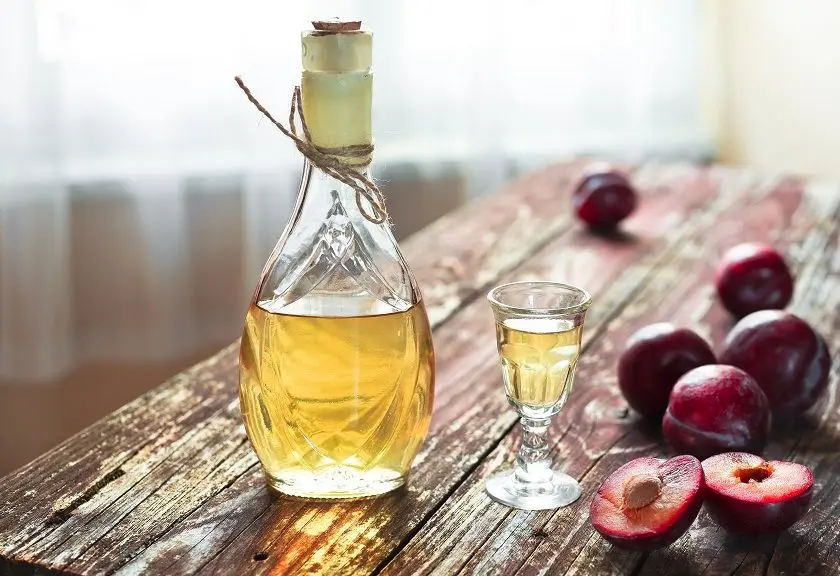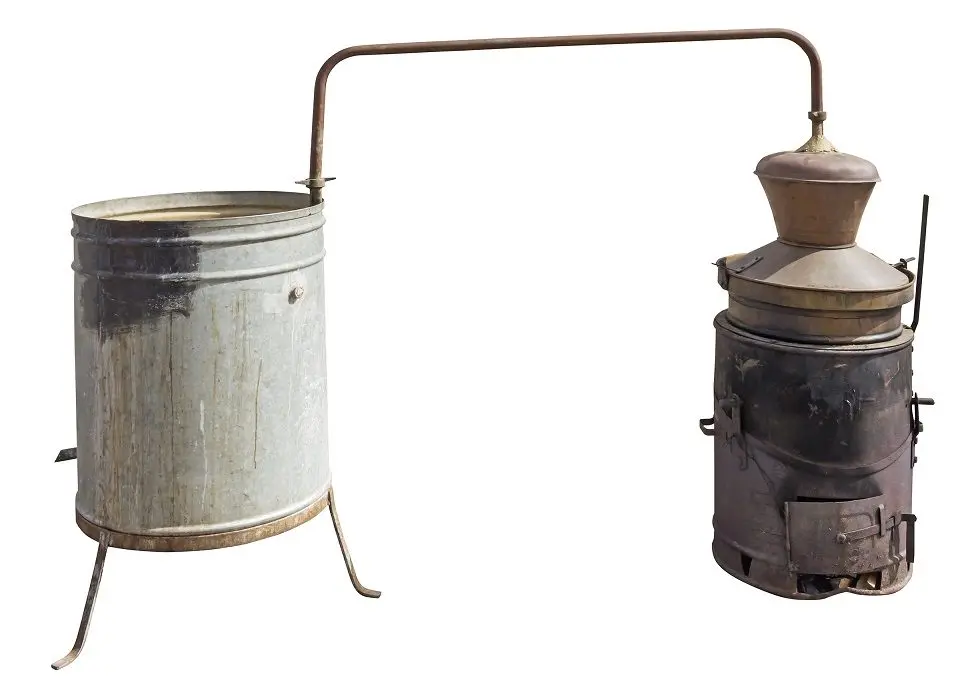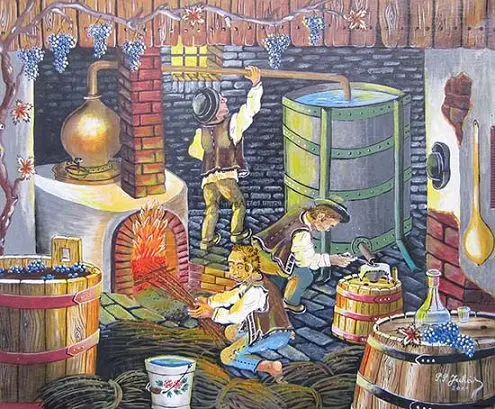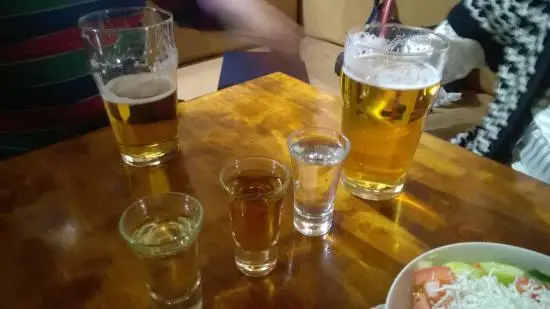Contents
If cognac and whiskey are the kings of alcohol, then rakia is the queen. It’s funny that despite the incredible popularity of this alcoholic drink among the South Slavic peoples, it is little known outside the Balkan Peninsula: there is something similar to rakia in Turkey and Cyprus, but the taste, production technology, and consumption culture are completely different.
Often, tourists coming from popular resorts speak disparagingly about rakia – they say, they tried it, they were not impressed. How can I not remember an anecdote here:
– I heard your Chaliapin – nothing special!
– What, you came on tour?
– No, the neighbor sang.
Rakia – This is a traditional Balkan alcoholic drink with a strength of 35-70 degrees (standard 40%), obtained by double or triple distillation of mash from fermented fruits: plums, grapes, wild pears, less often apples, cherries, apricots, quince. For the preparation of rakia, fruits are taken separately, but sometimes mixing of raw materials is allowed.
Simply put, rakia is fruit moonshine, but unlike the traditional “Russian” moonshine, it is made with wild (natural) yeast and no sugar is added.
In Bulgaria and Serbia – countries where brandy is considered almost a national treasure – the recipe is slightly different, however, both there and there it is customary to age the finished drink in oak barrels for at least two years, which is why brandy is also called Balkan brandy. This is not entirely true, since classic brandies are made from pressed fruit juice without pulp, but you can’t do anything to advertise your alcohol.

Bulgarian rakia
The descendants of the Bulgars know a lot about making rakia: almost every village house has its own moonshine still and a family recipe for the drink attached to it. And those who do not yet have finances to buy the necessary equipment (traditional copper cauldrons are expensive) can use public breweries, which are equipped right on the streets.
In October-November, immediately after the end of the grape harvest, each head of the family considers it his duty to make brandy for the year ahead. In Bulgaria, grapes usually go for this business, less often – wild dogwood or pears. In principle, raw materials for alcohol are highly dependent on the area: poor peasants use what they have in abundance. In some cases, it may even be a mixture of fruits, although such brandy is not considered a reference drink and is valued lower.

Sometimes a little wine is added to the grape must – so the product is softer and more aromatic. Also, in addition to the fruits themselves, the recipe may include herbs, honey, juniper, nuts and other “flavors”.
Bulgarians believe that the “correct” brandy is drunk imperceptibly, much lighter than vodka, and the strength of the drink is felt only in the stomach.
In Bulgaria, “grozdova” (grape brandy) is a cure for all diseases. Men start the day with a glass of strong drink and end it with a glass of strong drink, without failing to drink a couple of shots at dinner or just like that. Rakia is said to normalize metabolism, stimulate the stomach and fight infectious diseases.
Slivovitz: Serbian brandy
Serbia is rich in plums, up to 90% of the harvest goes to the famous slivovitz. It is difficult to overestimate the importance of this drink for the country. Suffice it to say that it became the first Serbian brand with proven geographical origin to be officially certified on the European market. The Serbs themselves are terribly proud of this fact and claim that only they can taste real rakia, all other recipes are a pale shadow of true fruit vodka.
In Serbia, rakia is not brewed, but “baked”, respectively, the double-distilled drink is called “perepečenica”. The most ripe plums are used for mash, they are not picked by hand, but the tree is shaken so that only ripe fruits fall. From 90 kg of fruit, only about 20 liters of soft “weak” plum brandy or 10 liters of real strong brandy are obtained.

How to drink rakia
First of all, with soul. This drink was not invented to “get drunk and forget”: rakia is an indispensable attribute of any Balkan feast, a witness to all human sorrows and joys. Of course, you can find brandy made at the factory, but self-respecting families prefer their drink, brewed in the family circle to the sound of music in a festive atmosphere.
It is customary to drink brandy from special small piles in small portions of a maximum of 50 ml. Each sip should be eaten immediately, for this, dried meat, a variety of cheeses and pickles are suitable, but best of all is the traditional Shopska salad. This simple appetizer can be prepared at home: all you need is sweet peppers, tomatoes, cucumbers, onions, cheese, olive oil, salt and vinegar to taste.

In Bulgaria, in winter they like to warm themselves with hot brandy with spices, sugar, caramel and orange zest. The recipe for this drink is similar to European mulled wine, but fruit distillate is used instead of wine.
Interesting Facts:
- In addition to “pure” brandy, there are also tinctures based on it: orahovacha (on green walnuts), medovaca (on honey), travaritsa (on wormwood or other herbs).
- The correct name for Serbian rakia is “Shlivovica”, and “plum”, through “s”, is a colloquial, rural pronunciation.
Raki cocktails
Rakia is often drunk in its pure form, but I advise lovers of bar culture to try it in cocktails. In addition to the banal dilution with apple, orange, cherry and grape juice in a ratio of 1:2 or 1:3 (one part of brandy to several parts of juice), there are more interesting options. I present to your attention the three most popular recipes for cocktails with brandy in the Balkans.
1. “Concrete”.
Serbian analogue of the famous “Ruff” – a mixture of beer and vodka. It is noteworthy that the Bulgarians reject the possibility of such a combination.
Ingredients:
- brandy – 50 ml;
- light beer – 400 ml.
Preparation: mix brandy and beer.

Another version of this cocktail is called “Submarine”. Rakia is poured into a mug of beer along the blade of a knife so that the drinks do not mix.
2. “Zorro”.
The cocktail was invented by John Poyster, the author of a collection of drink recipes. He combined Mexican and South Slavic cultures.
Ingredients:
- silver tequila – 25 ml;
- brandy – 25 ml;
- lime (lemon) juice – 25 ml;
- sugar syrup – 5 ml.
Preparation: mix all the ingredients in a shaker with ice, strain into a glass through a strainer (strainer). Garnish with a lime wedge.

3. “Balkan mulled wine”.
Hot cocktail, somewhat reminiscent of traditional mulled wine, but stronger and contains less spices.
Ingredients:
- red wine – 350 ml;
- black brewed tea – 150 ml;
- brandy – 200 ml;
- lemon juice – 25 ml;
- sugar – 5 tablespoons;
- black pepper – 1 pea;
- cinnamon – a quarter of a teaspoon.

Preparation: mix tea, wine, brandy, sugar and lemon juice in a saucepan, heat to 70°C, but do not bring to a boil. Add pepper and cinnamon, boil for 1-2 minutes, stirring constantly. Remove the pan from the stove, pour the cocktail into glasses for serving. Drink while warm.
homemade raki recipe
Real rakia is only found in the Balkans: there, in an old copper cauldron inherited from his grandfather, on firewood, under lively conversations and joyful impatience, real slivovitz, lozovach, dunyevach, krushkovac are born. But even at home, on a classic moonshine still, you can make a similar drink.

Ingredients:
- fruits (plums, grapes, apricots) – 20 kg;
- water – 5-10 liters.
For the preparation of rakia, ripe or overripe raw materials without rot and mold are required, the sweeter the fruits, the more finished drink will be at the exit. The amount of water depends on the initial consistency of the mash, it must be liquid.
Fruits should not be washed, so as not to remove wild yeast from their surface, due to which the must will ferment. For the same reason, it is better not to collect fruits immediately after rain, but to wait 2-3 days of dry weather.
Recipe
1. Unwashed fruits are crushed to a homogeneous slurry. In the classic version, this is done with the hands or feet. When using industrial mixers and other devices, it is important not to break the integrity of the seeds (if the raw materials are plums, apricots or cherries), because then bitterness may appear in the brandy.
2. Pour the gruel into a container with a wide neck. Bandage the neck with gauze, leave for a day in a warm, preferably dark place. After 8-16 hours, foam, hissing and a slight sour smell will appear – the fruit pulp has fermented. If this does not happen (rarely, but it happens), you should knead and add a couple of unwashed fruits to the wort.
3. Pour the wort into the fermentation vessel. Add water to make the mash become liquid, mix.
4. Install a water seal on the neck of the container. Leave the container at a temperature of 18-25°C, protected from direct sunlight. Fermentation lasts 14-45 days. Then the water seal stops emitting gas, a layer of sediment appears at the bottom, and sugar is not felt in the mash. These signs indicate that the fermentation is over and you can proceed to the next stage.
5. Strain Braga through cheesecloth to get rid of the pulp, pour into a distillation cube. The pulp can burn during the distillation process, spoiling the taste.
6. Overtake the mash. Finish distillate extraction when the yield drops below 25-30%.
7. Dilute all obtained moonshine with water up to 17-20%.
8. Redistill. The first 100-150 ml of yield for every 10 kg of raw material should be taken separately. This is a harmful fraction called “heads”, it contains methyl alcohol and other harmful impurities, you can not drink it. Finish the selection when the fortress falls below 40% (moonshine stopped burning).
9. Dilute homemade brandy to the desired strength, usually 40-45%. After 2 days of “rest” in a dark place, the drink is ready to drink, but in the classic recipe, the distillate is still insisted in barrels. If possible, I advise you to try.










